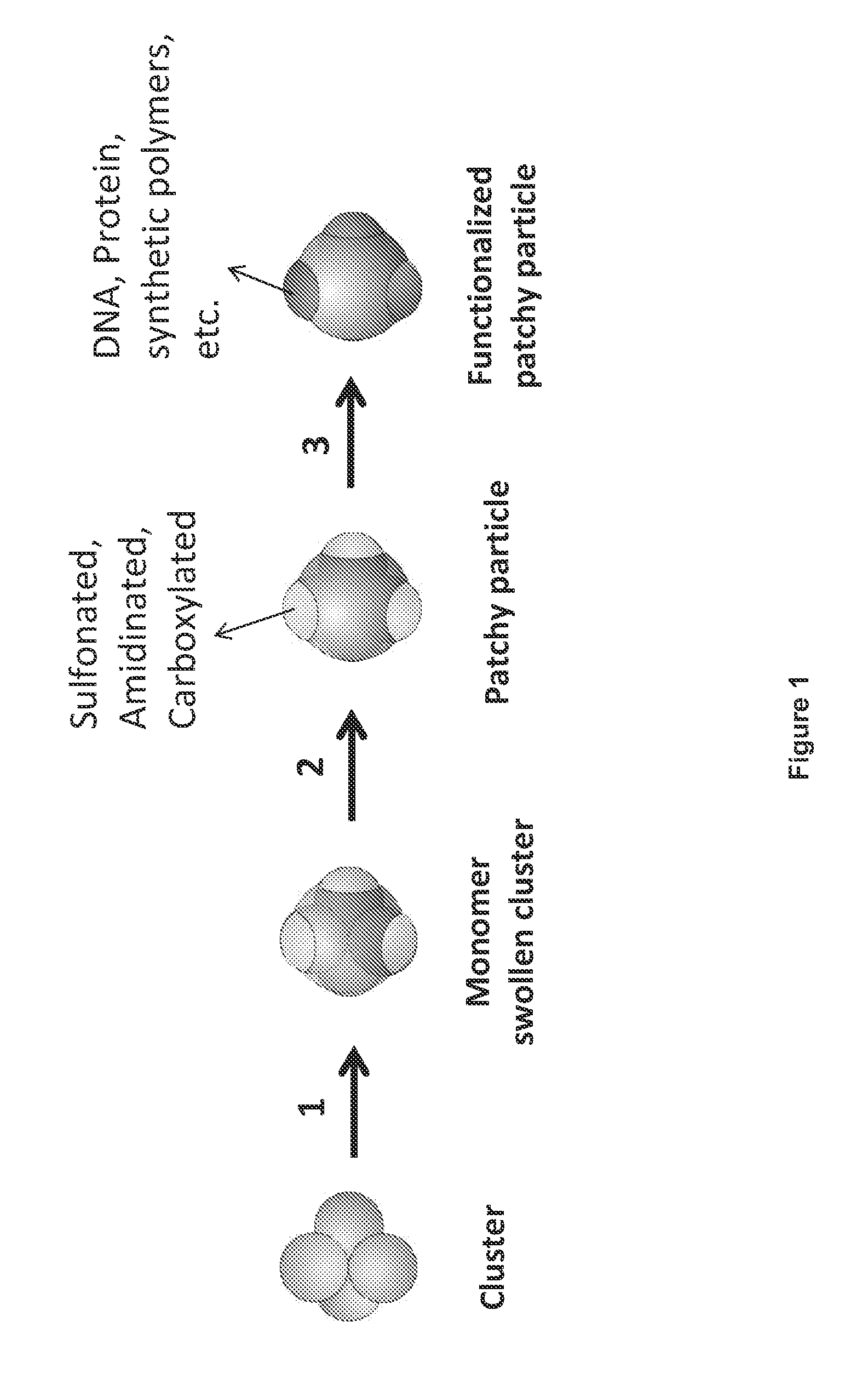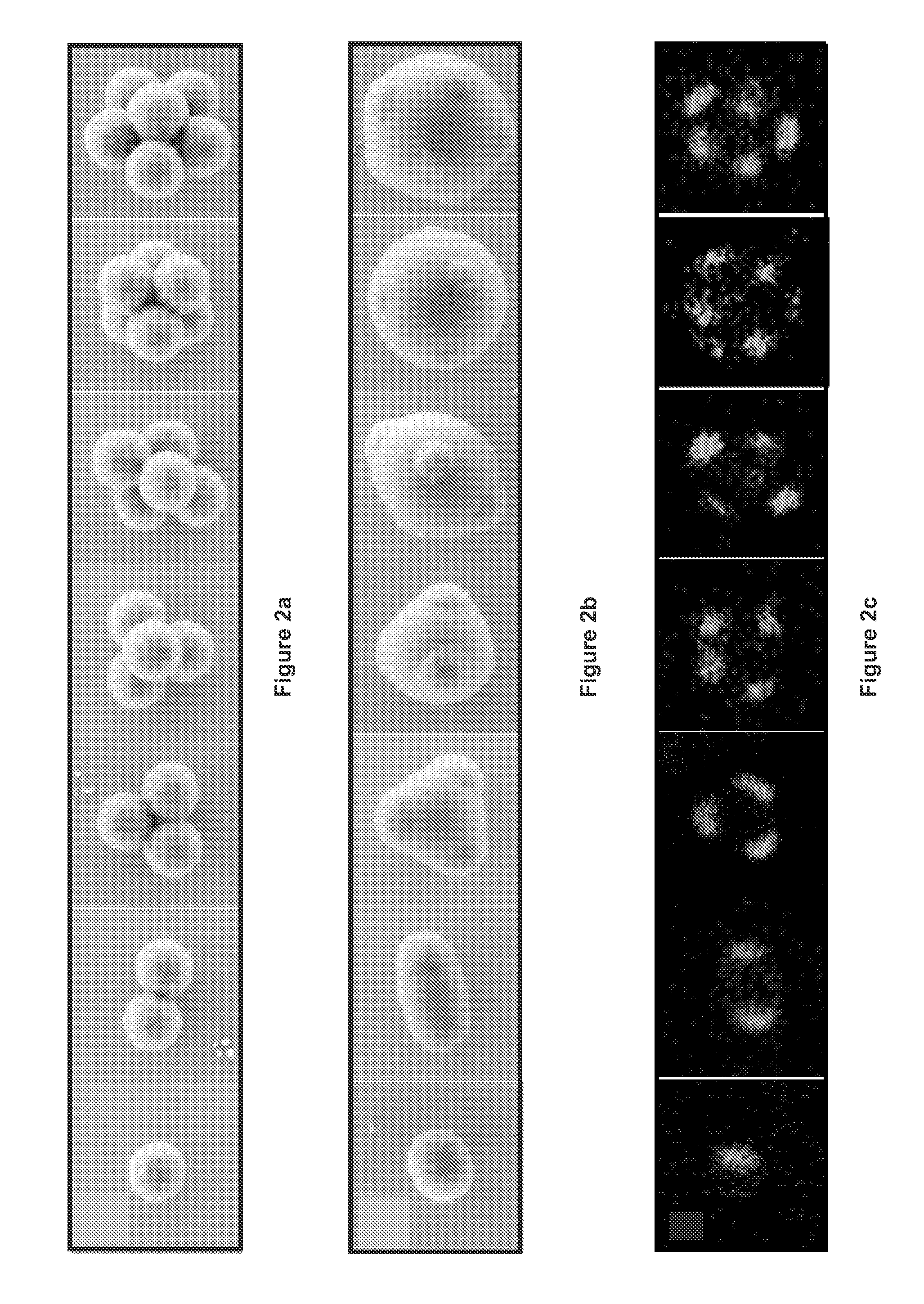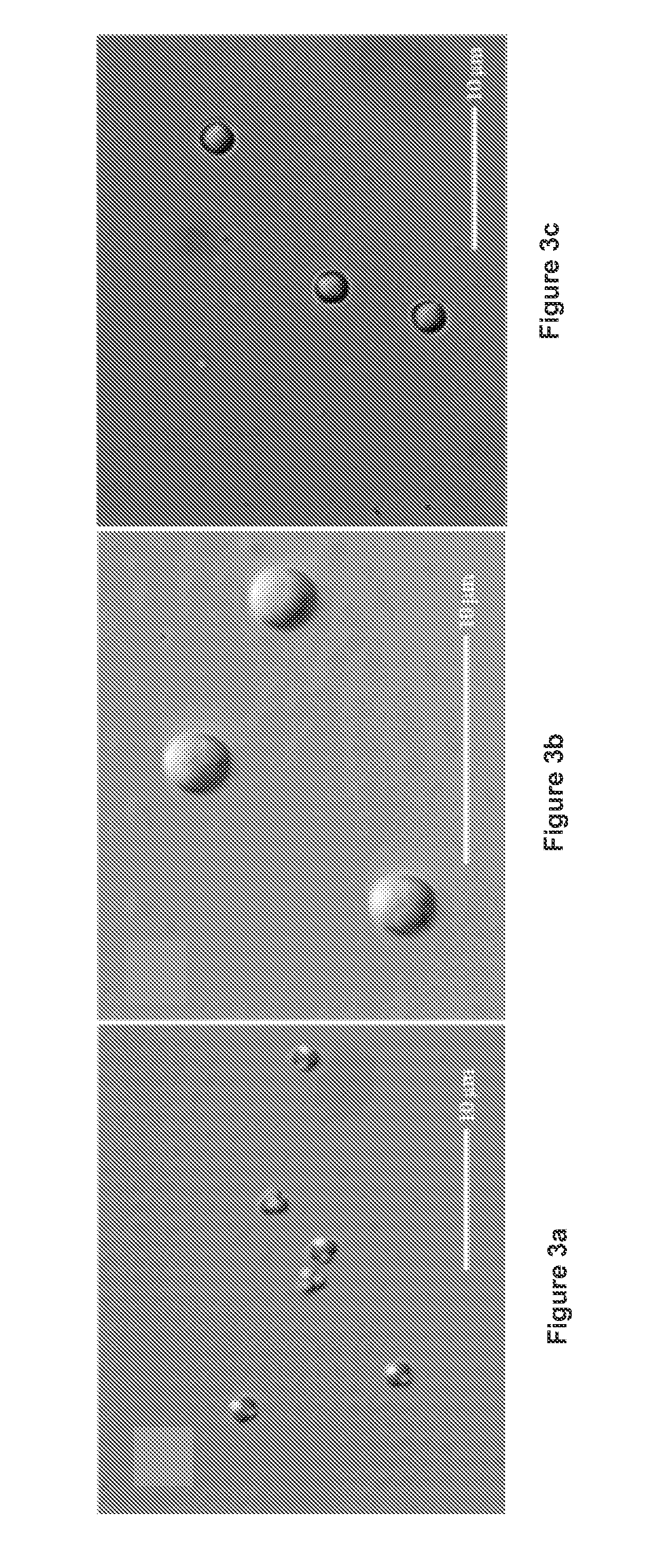Colloids with valence: fabrication, functionalization and directional bonding
a colloidal particle and functional technology, applied in the field of colloidal particle assembly, can solve the problems of diamond lattice, many structures remain difficult or impossible, and the inability to design and assemble 3-dimensional structures from colloidal particles
- Summary
- Abstract
- Description
- Claims
- Application Information
AI Technical Summary
Benefits of technology
Problems solved by technology
Method used
Image
Examples
example 1
[0041]Typically, 10 mL of the amidinated cluster suspension (1% w / w, pH=2.93, 540 or 820 nm in diameter) was charged into a 50 mL 2-neck flask along with a magnetic stir bar. The flask was submerged in an oil bath and the temperature was set to 35° C. 1 mL of acetone was added and the suspension was stirred at 300 rpm. In a separated glass vial, 50 mg of benzoyl peroxide were dissolved in 0.63 mL of 1,2-dichloroethane. Then, 0.88 mL of 1-chlorodecane was added to the vial followed by the addition of 5 mL of an aqueous solution of 0.1% SDS. The resulting mixture was then vortexed to create an emulsion, from which 200 μL were added to the cluster suspension. The resulting mixture was stirred for 12 hours at 35° C. Then, the acetone was removed via evaporation under reduced pressure (30 mmHg). The flask was equipped with a condenser containing an oil bubbler at the top. Using a needle, nitrogen was bubbled through the suspension for 30 minutes. Then, 1 mL of styrene (with inhibitor rem...
example 2
[0042]Typically, carboxylated cluster suspension (0.5% w / w, pH=9.5, 620 nm in diameter) was used. In the case of particles dispersed in organic solvents, 3% DVB are used together with styrene when the clusters are swollen. The rest of the fabrication condition is the same as that shown in Example 1.
example 3
[0043]Typically, sulfonated cluster suspension (1%, pH=7.0, 850 nm) was used. The rest of the fabrication condition is the same as that shown in Example 1.
PUM
| Property | Measurement | Unit |
|---|---|---|
| diameter | aaaaa | aaaaa |
| diameter | aaaaa | aaaaa |
| diameter | aaaaa | aaaaa |
Abstract
Description
Claims
Application Information
 Login to View More
Login to View More - R&D
- Intellectual Property
- Life Sciences
- Materials
- Tech Scout
- Unparalleled Data Quality
- Higher Quality Content
- 60% Fewer Hallucinations
Browse by: Latest US Patents, China's latest patents, Technical Efficacy Thesaurus, Application Domain, Technology Topic, Popular Technical Reports.
© 2025 PatSnap. All rights reserved.Legal|Privacy policy|Modern Slavery Act Transparency Statement|Sitemap|About US| Contact US: help@patsnap.com



